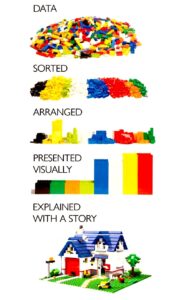There are different ways of testing for the SARS-Cov-2 virus that causes Covid-19. Broadly speaking, there are three approaches to the actual measurement: amplifying and testing for the viral RNA, testing for viral proteins, and testing for antibodies against the virus. On top of that, samples can be be taken in different places: way up in the back of your nose, less far up, saliva samples, blood.
These tests are useful for different purposes because they have different characteristics. The viral RNA tests using a deep swab and PCR have essentially zero false positives if you can avoid contamination. That’s important in New Zealand because we use positive PCR tests to lock down the whole country, at nine-digit costs, and because we use them to put people in non-voluntary medical isolation.
The swab/PCR tests also have reasonably low false negatives. Nowhere near as low as the false positives — the lab assay is incredibly sensitive, but sometimes the swab just doesn’t pick up virus. Again, we know this from NZ data. We currently have tests as soon after exposure as possible, again at five days, and again at twelve days, and people do test positive at five days or twelve days for the first time. The false negative rate is important in New Zealand because we don’t want to miss even one case and allow an outbreak to expand.
For the places where we use swab/PCR testing now, we don’t want to substitute anything else. It’s the best technology available. But there are limits. The swab is a bit uncomfortable and the PCR process is slow and requires lab equipment in limited supply. We couldn’t, for example, do daily testing of all customer-facing essential workers with swab/PCR: they’d hate it and the labs would struggle to keep up.
In other countries, it’s much more valuable to have easy, rapid, and inexpensive tests even at a slight cost in sensitivity. There’s some risk of infection all the time; the consequences of a false positive or false negative are lower; there isn’t the same need to make sure all positive tests get reported. There’s a lot more scope for other tests to be helpful.
Even in NZ, though, there are gaps where other tests could be useful. The obvious one is frequent testing of high-risk people. In normal times that would be people at the border; during an outbreak it might be essential workers whose job involves being exposed to customers or crossing the alert-level boundaries. If we compare to swab/PCR the rapid antigen tests are not as good; but that’s not the right comparison. The rapid tests would be useful in settings where there isn’t going to be a swab/PCR. In those settings, the chance of detecting a case with swab/PCR is obviously zero, and the chance of detection with another test is actually pretty fair.
There’s a theoretical downside that negative rapid tests might slow someone with symptoms from getting a swab/PCR test until they get a positive. If we were getting nearly 100% testing among people with symptoms, this would be a big concern. We probably aren’t anywhere near that; but it would need monitoring. There’s also a theoretical downside that false positive rapid tests might make people take positive results less seriously. I don’t think that’s plausible during lockdown, but again it would need monitoring. Somewhat more likely, it might turn out that there’s nothing actually wrong with the tests but that they don’t detect enough additional cases to be worth the cost and hassle. But that’s worth investigating, and where the realistic options are additional rapid tests or just the status quo, the effectiveness comparison should be between additional rapid tests and just the status quo.

Recent comments